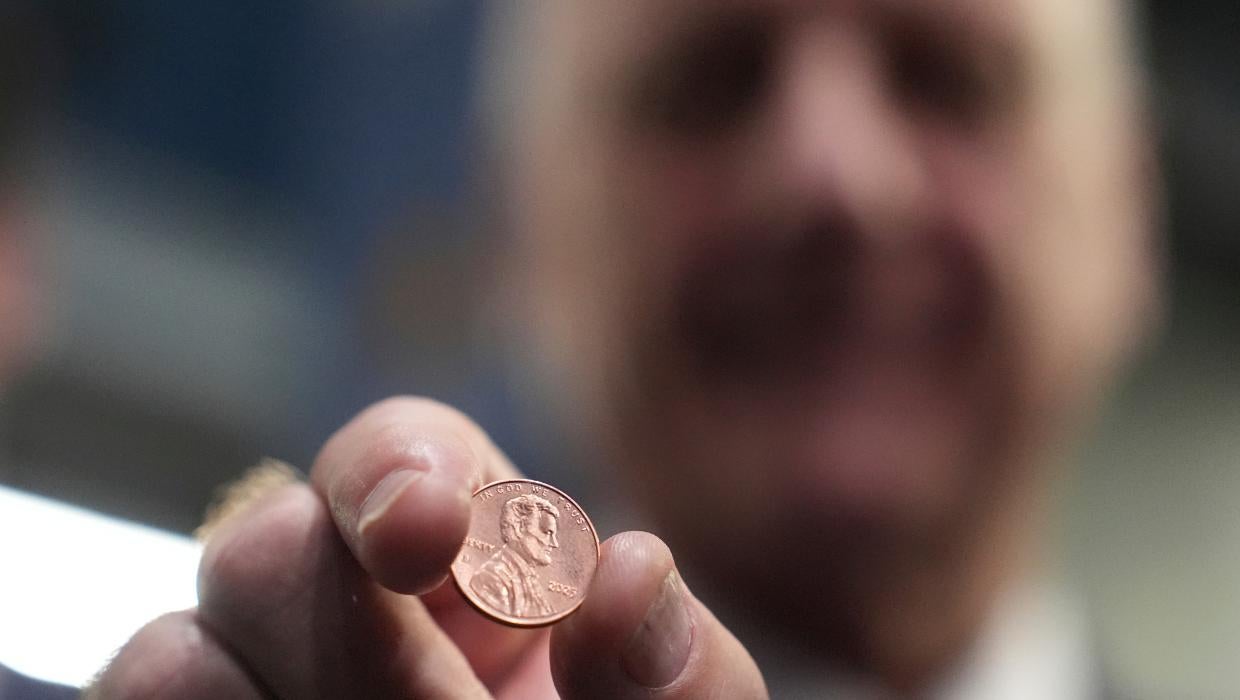Business
U.S. Mint Ceases Penny Production After 230 Years of Circulation

The United States has officially ended the production of the penny, marking the close of an era that began over 230 years ago. On March 15, 2024, the final 1-cent coin was struck at the U.S. Mint in Philadelphia, a move that reflects changing economic realities and the declining relevance of the coin in everyday transactions.
Historically, the penny has been a symbol of frugality and commerce. Introduced in 1793, a penny once bought items like biscuits or candles. Today, however, it costs nearly 4 cents to produce a single penny, leading to a significant financial burden on taxpayers. According to Brandon Beach, Treasurer of the U.S., the decision to discontinue the penny will save taxpayers approximately $56 million annually.
During the final coin pressing, a solemn atmosphere enveloped the mint as workers gathered to witness the last coins emerge from the machinery. Beach pressed a button to strike the final penny, which was then displayed for journalists before being auctioned off. “It’s an emotional day,” said Clayton Crotty, a mint employee with 15 years of service. “But it’s not unexpected.”
Economic Considerations and Public Sentiment
The push to eliminate the penny was partly driven by rising production costs and the coin’s diminishing purchasing power. Former President Donald Trump expressed his frustration with the penny’s inefficiency in a February 2024 post, stating, “For far too long the United States has minted pennies which literally cost us more than 2 cents. This is so wasteful!”
Despite the economic rationale, many Americans have fond memories associated with the penny, viewing it as a lucky charm or a collectible. Some retailers expressed concerns about the abrupt end of production, particularly as supplies dwindled and a lack of governmental guidance emerged regarding how to manage transactions without the coin. Many businesses opted to round prices down to avoid inconveniencing customers, while others incentivized the use of pennies by offering rewards.
According to Jeff Lenard of the National Association of Convenience Stores, the industry has advocated for the penny’s elimination for three decades, but the sudden phaseout was unexpected.
The Future of Currency and Historical Implications
While the production of new pennies has ceased, billions of pennies remain in circulation and will continue to serve as legal tender. The last U.S. coin to be discontinued prior to this was the half-cent, which was phased out in 1857.
As the mint transitions away from the penny, the production of other coins continues. It costs approximately 14 cents to produce a nickel and less than 6 cents for a dime, while quarters are made at a cost approaching 15 cents. This highlights the persistent issue of production costs versus face value in U.S. currency.
Historically, coins like the penny represent more than just currency; they encapsulate cultural ideals and collective memory. Frank Holt, an emeritus professor at the University of Houston, lamented the loss of the penny, emphasizing its role in reflecting the nation’s values and history. “They reflect our politics, our religion, our art, our sense of ourselves, our ideals, our aspirations,” he noted.
The penny’s discontinuation signals a significant shift in American currency and raises questions about the future of small denominations. As the U.S. follows the lead of other nations, like Canada, which stopped minting its penny in 2012, the focus turns to how society will adapt to this change in daily transactions.
-

 Sports2 months ago
Sports2 months agoNetball New Zealand Stands Down Dame Noeline Taurua for Series
-

 Entertainment2 months ago
Entertainment2 months agoTributes Pour In for Lachlan Rofe, Reality Star, Dead at 47
-

 Entertainment1 month ago
Entertainment1 month agoNew ‘Maverick’ Chaser Joins Beat the Chasers Season Finale
-

 Sports2 weeks ago
Sports2 weeks agoEli Katoa Rushed to Hospital After Sideline Incident During Match
-

 Sports2 months ago
Sports2 months agoSilver Ferns Legend Laura Langman Criticizes Team’s Attitude
-

 Politics1 month ago
Politics1 month agoNetball NZ Calls for Respect Amid Dame Taurua’s Standoff
-

 Sports1 week ago
Sports1 week agoJamie Melham Triumphs Over Husband Ben in Melbourne Cup Victory
-

 Entertainment3 months ago
Entertainment3 months agoKhloe Kardashian Embraces Innovative Stem Cell Therapy in Mexico
-

 World3 months ago
World3 months agoPolice Arrest Multiple Individuals During Funeral for Zain Taikato-Fox
-

 Sports3 months ago
Sports3 months agoGaël Monfils Set to Defend ASB Classic Title in January 2026
-

 Entertainment2 months ago
Entertainment2 months agoTyson Fury’s Daughter Venezuela Gets Engaged at Birthday Bash
-

 Sports2 months ago
Sports2 months agoHeather McMahan Steps Down as Ryder Cup Host After Controversy




















